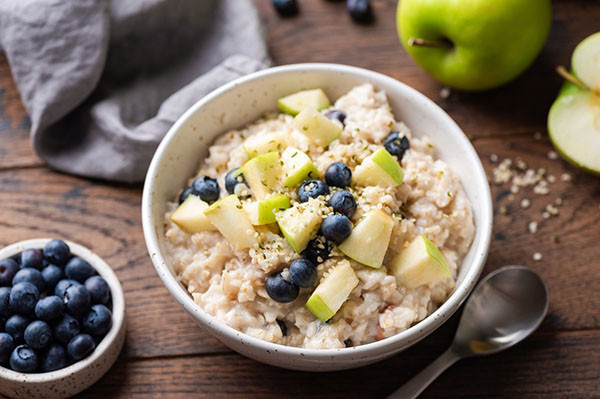Gastroesophageal reflux disease (GERD), commonly known as acid reflux, is a condition where stomach acid frequently flows back into the esophagus, causing heartburn and other symptoms. Managing GERD often involves lifestyle adjustments, and one of the most impactful changes you can make is modifying your diet to avoid foods that trigger or worsen acid reflux. Understanding which foods are likely culprits can significantly improve your comfort and reduce the frequency of reflux episodes.
While dietary recommendations for GERD have evolved, moving away from overly restrictive bland diets, it’s still crucial to recognize that certain foods are more prone to triggering acid reflux than others. Identifying and limiting these trigger foods is a cornerstone of effective GERD management.
Common Food Culprits for Acid Reflux
Several categories of foods are known to exacerbate acid reflux symptoms. These foods often share characteristics that either increase stomach acid production, relax the lower esophageal sphincter (LES) – the valve between the stomach and esophagus – or delay stomach emptying. Here’s a breakdown of the most common food groups and specific items that can worsen acid reflux:
1. High-Fat Foods, Especially Fried and Processed:
Fatty foods are notorious for triggering acid reflux. They take longer to digest and empty from the stomach, which increases pressure in the stomach and the likelihood of acid refluxing back into the esophagus. Fried foods, due to their high fat content and often heavy, greasy nature, are particularly problematic. Processed foods, which are frequently high in unhealthy fats and additives, can also contribute to reflux symptoms.
 Bowl of oatmeal with blueberries and green apple chunks, berries and apple slices on the side, illustrating a GERD-friendly breakfast option with whole grains and non-citrus fruits, promoting healthy eating habits for acid reflux relief.
Bowl of oatmeal with blueberries and green apple chunks, berries and apple slices on the side, illustrating a GERD-friendly breakfast option with whole grains and non-citrus fruits, promoting healthy eating habits for acid reflux relief.
Examples of high-fat foods to limit or avoid include:
- Fried foods: French fries, fried chicken, onion rings, doughnuts
- Fatty cuts of meat: High-fat beef, pork, lamb
- Whole milk dairy products: Full-fat cheese, cream, ice cream
- Butter and margarine
- Oily or creamy sauces and dressings
- Processed snacks: Chips, pastries, high-fat cookies
2. Spicy Foods:
Spicy foods, while enjoyable for many, can be a significant trigger for heartburn and acid reflux. The capsaicin in chili peppers, which gives them their heat, can irritate the esophagus and stomach lining. Spicy foods can also slow down stomach emptying in some individuals, further increasing the risk of reflux.
Examples include:
- Dishes with chili peppers: Curries, spicy stir-fries, chili con carne
- Hot sauces and salsas
- Spicy seasonings: Cayenne pepper, chili powder, hot paprika
3. Acidic Foods:
Highly acidic foods can directly irritate the esophageal lining, especially if it’s already inflamed due to acid reflux. While not everyone reacts to acidic foods in the same way, they are common triggers for many individuals with GERD.
Examples of acidic foods to be mindful of:
- Citrus fruits and juices: Oranges, lemons, grapefruits, limes, pineapple
- Tomatoes and tomato-based products: Tomato sauce, ketchup, salsa, tomato soup
- Vinegar and vinegar-based dressings: Salad dressings, pickles
4. Chocolate:
Chocolate is a known reflux trigger for several reasons. It contains caffeine and theobromine, both of which can relax the LES. Chocolate is also high in fat, which, as discussed earlier, delays stomach emptying.
5. Caffeine:
Caffeinated beverages, such as coffee, tea, and soda, can stimulate acid production in the stomach and relax the LES, making reflux more likely. The acidity of coffee itself can also be a contributing factor for some individuals.
6. Onions and Garlic:
Onions and garlic, especially when raw, can trigger heartburn in some people. They contain compounds that can relax the LES and increase stomach acid production.
7. Peppermint and Spearmint:
Mint, including peppermint and spearmint, can surprisingly worsen acid reflux by relaxing the LES. While often thought of as soothing for digestion, mint can be problematic for those with GERD.
8. Carbonated Beverages:
Carbonated drinks, including soda, sparkling water, and beer, can increase pressure in the stomach. The bubbles can expand the stomach, putting pressure on the LES and increasing the chance of reflux. Additionally, many sodas are acidic, further contributing to the issue.
9. Alcohol:
Alcohol can irritate the stomach and esophagus. It also relaxes the LES and increases stomach acid production. Both the type and amount of alcohol consumed can influence reflux symptoms.
Identifying Your Personal Trigger Foods
It’s important to remember that food sensitivities and reflux triggers can vary from person to person. While the foods listed above are common culprits, not everyone will react to all of them. The best way to identify your specific trigger foods is through an elimination diet.
Elimination Diet Approach:
- Eliminate: Remove all the common trigger foods listed above from your diet for 2-4 weeks.
- Monitor Symptoms: Keep a food diary and track your acid reflux symptoms during this elimination period. Note any improvements in your symptoms.
- Reintroduce: Gradually reintroduce one food group at a time, every 2-3 days. Pay close attention to how your body reacts. If your reflux symptoms return or worsen after reintroducing a particular food, it’s likely a trigger for you.
- Personalized Diet: Based on your findings, create a personalized diet that minimizes or eliminates your specific reflux trigger foods.
By carefully observing your body’s response to different foods, you can gain valuable insights into what foods worsen your acid reflux and tailor your diet for better symptom management and long-term digestive health. Consulting with a healthcare professional or registered dietitian can also provide personalized guidance and support in managing GERD through dietary changes.

